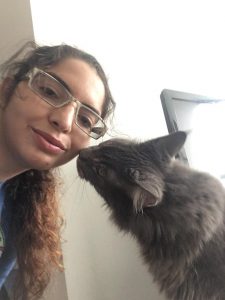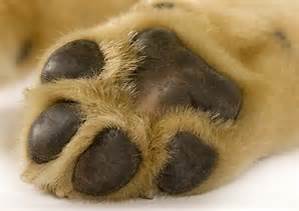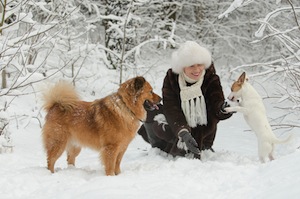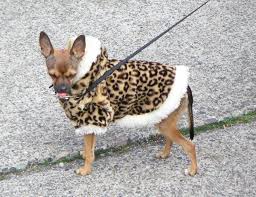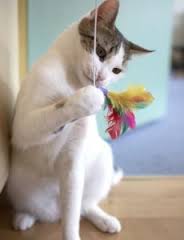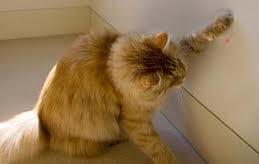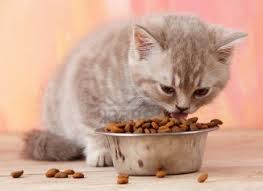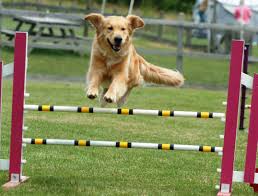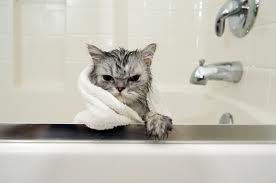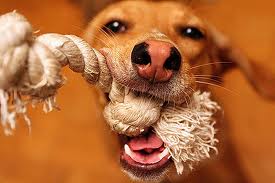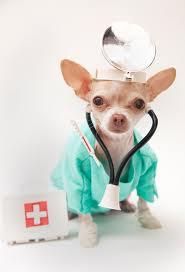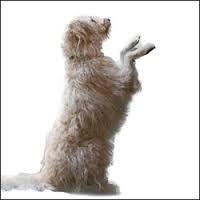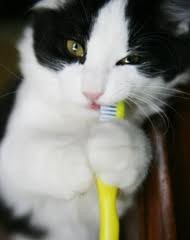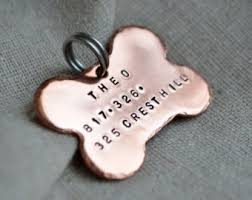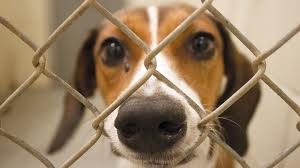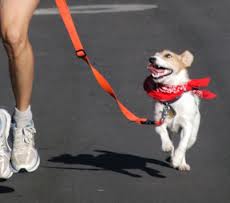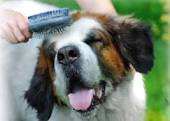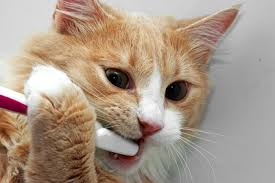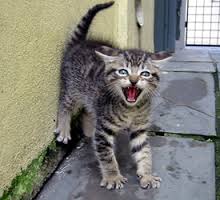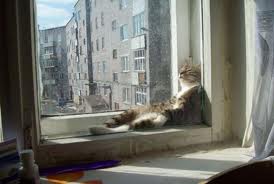Archive for the ‘Pets’ Category
SITTER HIGHLIGHT: EMMY!!!
Dog Food: The Good, The Bad and The Ugly
Dog Food: The Good, The Bad and The Ugly
The Good (On Dog Food):
Yes you have had a dog for years and think you know it all! And you may know a lot about dog food, but even if you do (and of course for those that don’t), it’s always a good refresher.
(1) Stick to protein rich dog food, which result in more energy for your dog, less health problems.
(2) Also give your dog only human grade dog food. Most dog foods are classified as “feed” which means its made up of meat from dead, dying, and diseased animals. Yuck!
(3) The least processed the better. Canned and kibble go through such extreme processing to make them shelf stable. It’s much easier to absorb nutrients, and there are more nutrients in foods that are less processed.
The Bad (On Dog Food):
(1) Stay away from wheat & processed grains.
(2) Be weary of dog food that is made up of “meal.” If the word “meal” comes after a mean on the ingredients list of your dog food then its not real meat, its a by product which can also contain feathers, grease and whatever else is lying around.
(3) Stay clear of preservatives, which most commercial brands use to extend the shelf life of their dog food. Some preservatives used double as pesticides- they are not even permitted in the UK, but the good old US of A allows them of course!
(4) Don’t feed table scraps! No need, and nothing good will come from it (unless you like a fat begging dog at your tableside, j/k, well not really!). Also remember never ever feed your dog: chocolate, onions, grapes, raisins, bones and macadamia nuts.
The Ugly (On Dog Food):
The FDA doesn’t control what manufacturers are putting in our pet’s food! So we must ourselves be very diligent, because as you know the saying ‘what we eat is what we are’ goes for dogs too! And you don’t want your dog to be a sick animal.
Side Notes:
(1) Wash your dog food bowl regularly, whether you give him dry, wet or raw, and water bowl for that matter. If you wouldn’t eat off of the same plate every meal why should he? (Hopefully I’m not assuming too much! LOL)
(2) Feed your dog the correct portions of food, read labels, talk to your vet. You are not helping your dog by over feeding him!
(3) Keep your dog hydrated- they need a lot of water! To help your dog drink more, wash his water bowl daily, and give fresh water at least with every meal!
Final Thoughts:
I think my dog eats better than me (actually I know he eats better than me) but that makes me happy knowing that he will live his longest healthiest life that I can give him. Yes it’s hard to resist that cute face begging you for some food off your plate, but just remind yourself you would rather have your dog live a long healthy life (than a fat beggar), if so then just give him a hug and a pat instead, or better yet, play a game of fetch with him after you eat!
Here’s a great source to check out. You can look up the brand of dog food you are feeding your pup, and see if its worthy enough! Dog Food Advisor
Are Raw Diets Good for your Pets?
My Valentino has a very sensitive stomach, and a couple of years ago, he had chronic diarrhea for over a a year- poor thing! During that time, I tried every food (meaning all healthy kibbles), vet RX food, just about everything, and nothing worked until I found raw. At first, I’ll admit, I wasn’t a fan because its expensive, its gross and it requires more work than just dumping some kibble in his bowl. But, as anyone who knows me, knows I would do anything for my dog, so I tried it – and his chronic diarrhea went away, his itchiness went away, his coat is always shinny, and people cant believe he’ll be 7 years old because he’s in such amazing shape!
Feeding a whole, raw food diet has been associated with:
Increased energy
Healthier skin and the elimination of itchy skin conditions
Shinier fur with less shedding
Healthier teeth, gums, and better breath
Firmer muscle tone with increased strength and mobility
Healthy digestion and smaller, firmer stools
Stronger immune system
Better weight management
Raw food is also believed to help mitigate and prevent:
Cancer
Diabetes
Kidney and liver disease
Heart disease
Pancreatic disease
Autoimmune disease
Cats and dogs are natural carnivores. They have long, sharp teeth designed for meat eating, and their digestive tract is much shorter and secretes enzymes that enable them to safely consume raw meat. Their stomach acids are so much stronger than ours that they tend to kill off almost all pathogenic bacteria anyway. Raw food is high in protein and the natural nutrients that your pet needs.
Most processed kibble and canned pet foods are the equivalent of junk food for your pet. The intensive manufacturing processes create an inferior and biologically inappropriate product that is low in nutritional value and lacks vital food enzymes. Feeding these foods can lead to a negative effect on our pet’s health. Raw, whole ingredients will support and optimize a healthy immune system and wellness.
If you do the switch, don’t be alarmed when your dog poops a lot less, and it’s much smaller in size- this is supposed to happen because the food he is eating is high quality and its being used instead of excreted.
Why not give it a try! There’s plenty of brands out there to make it easier than figuring it out on your own, and in the long run, you will save money on your pet’s medical bills, good luck!
Tips to Protect Your Pups Paws in the Winter Months!
Winter can be tough, especially on your dog’s paws! Take some steps to ensure overall health for one of your dog’s most important assets- his paws!
(1) Simple! Just check your dog’s paws regularly- meaning daily. Inspect for abnormalities, scraps, cuts, injuries. Press down on the pads to see your dog’s response. Check between their pads for lumps, cuts, or discoloration as well.
(2) Trim your dog’s hair between its paw pads- in order to keep the snow and ice from sticking to it and causing frostbite!
(3) Toughen up your dog’s paws by walking your dog on cement of pavement regularly.
(4) Moisturize your dog’s paws to prevent cuts, cracking or peeling. Bag Balm made especially for pets is a favorite to use and works wonders- just massage it in!
(5) Use paw wax to add a layer of protection on your dog’s paws especially when its snowy, icy and salty outside!Musher’s Secret paw wax is a favorite, but you can also get away with vaseline or something of that type.
(6) To melt the snow, use Safe Paw Ice Melter, instead of other salts. It will not irritate the pets paws.
(7) For serious protection consider using dog shoes or reusable rubber dog booties, or just socks. I have all of the above, and since my dog Valentino is very active the shoes tend to slip off sometimes. But if your dog is very sensitive to the cold/ice/salt and the Mushers doesn’t cut it, I would try it out! Take your dog over to the store with you to try them on, so you know you are buying the right size, and can even get pointers how to put them on.
(8) Wash/wipe your dog’s paws after going outside especially to get the salt off their paws!
Enjoy the tips, and try to enjoy the winter months with your pups!
Anything & Everything About Dog Walking!
Whether you are a new dog parent, or a veteran owner, there is always room to learn!
Dog walking is so important because dogs need to explore, hunt, and discover new sights and smells, its part of their nature. Even if you have a backyard or a ton of toys, dogs still need their walking time. In addition, dog walking is a form of physical and mental exercise for your pup! And a great time to bond, and practice those commands you taught him.
Basic dog walking supplies include a safe sturdy harness/collar and leash that cannot break (please do not use retractable leashes, esp. in city settings, lets keep those reserved for hikes and the country); poop bags; bottle of water and drinking mechanism for those hotter days; treats for positive reinforcement.
When walking your dog, try to take a new path/route, don’t always walk the same path, your dog will be so thankful for all the new smells and sights!
Remember that Whiskers and Leo is always here to answer your dog walking questions! Just shoot us an email at info@whiskersandleo.com.
Teach Your Dog To Do NOTHING!
This is a great read for all dog owners! I do something similar with my dog Valentino, but I labeled it LEAVE IT. So anytime he is looking/staring at someone/something, and I think he may start to bark etc, I say LEAVE IT, if I see something on the floor I don’t want him to touch, I say LEAVE IT. Its a great command, and the below, is also a great alternative to reward your dog for behaving!
“Reinforcing your dog for doing nothing is a technique I learned from my most amazing mentor, Kyle Rayon. The idea is, when you see your dog doing absolutely NOTHING, that is the moment you want to reinforce him with attention and treats. For example: Your dog is standing calmly at your side on a loose leash, and an excitable dog comes out of the blue from around a corner. As your dog sees the other dog, you pop a treat in your dog’s mouth while he is standing there DOING ABSOLUTELY NOTHING! By doing this you will reinforce your dog for doing nothing in this situation, making it more likely he will do nothing when in a similar situation in the future. Don’t wait the 3 seconds for when your dog starts barking his head off at the other dog. Another example is: You are in the street standing and talking to a friend on a walk, while your dog is next to you doing nothing. Feed your dog a treat for doing nothing while you chat. Don’t wait until your dog starts whining, or pulling or jumping on you to give him attention. “Nothing Behaviors” are highly overlooked by many dog trainers. Many trainers focus on training dogs to “Sit”, “Down”, and “Stand”. But they forget to reinforce all the wonderful “Nothing Behaviors” that the dogs are already doing!
Tip: When reinforcing your dog for doing nothing, you need to get the treat to him before he thinks to look at you. This is because you want to “take a picture” of that calm behavior he is doing at that exact moment in time with the reinforcement, so that exact behavior will be repeated in the future. If your dog turns to look at you as you feed him a treat, you will be “taking a picture” only of a dog that is excited about the food that he is about to eat. Feeding him a treat while he is looking for his treat will not at all reinforce the calm nothing behavior you had hoped for, so wait until your dog is not thinking about the food again, before giving your dog the treat.
You can get the food to your dog while he is not looking at you, by having food already prepared in your hand, so that you don’t make a noise before you move to feed your dog. You can also toss a treat between your dog’s paws so it is less expected, or come from behind your dog with the treat to get it to his mouth. If you have a dog that is so over-aroused by food that he never looks away from the food, teach him to settle around food first.”
From website: http://dogmantics.com/train-your-dog-to-do-absolutely-nothing/
BEWARE: High Rise Syndrome
When summer comes around, many pet parents eagerly open windows to enjoy the weather. Unfortunately, they are also unknowingly putting their pets at risk. Unscreened or unsecured windows pose a real danger to cats (and some dogs too!), which fall out of them so often that the veterinary profession has a name for the complaint: high-rise syndrome.
FACTS:
(1) Cats have excellent survival instincts, and most cats fall accidentally from windows etc.
(2) Cats have an incredible ability to focus their attention on whatever interested them- like a bird etc- which can cause distraction, and may loose their balance and fall.
(3) Because cats have little fear of heights, pet owners assume they can take care of themselves. But just because cats have claws and can cling to some things, they cant cling to all things, such as concrete, brick or window ledges.
(4) When cats fall from higher places, they don’t land squarely on their feet, instead they can land splayed apart, which can cause head and pelvis injuries.
(5) Its a misconception that cat’s wont be injured if they fall from one or two story buildings, because these short distances may not give them enough time to adjust their body posture.
PREVENT HIGH RISE SYNDROME:
(1) Install snug and sturdy screens in all windows.
(2) If windows have adjustable screens, make sure they are tightly wedged into window frames.
(3) Note that cats can slip though childproof window guards. These don’t provide adequate protection!
Spring Tips for Your Pup!
Spring is in the air! Just some quick reminders because we know you love your dog, and we do too!
(1) Sticks are a NO-NO! Have your dog play with a frisbee or tennis ball instead. Sticks can splinter, and can cause choking and severe injuries to your pup!
(2) Before getting new spring plants, check THIS SITE out to make sure you are not poisoning your pup!
(3) Use pet-friendly products for spring cleaning! Make sure your products are dog-safe, and also keep them in a cabinet your dog cannot get to- you never know!
(4) Start flea and tick prevention if you haven’t already!
(5) Watch for signs of seasonal allergies. Some dogs develop allergies to common seasonal plants, and most dogs react with skin problems. Talk to your vet professional regarding any symptoms your dog may be experiencing.
Getting a Kitten? Read these Nutrition Tips!
 Kitten’s nutritional needs differ greatly from an adult cat’s requirements. After all, that little ball of fluff may double her weight during the first few weeks in her new home. And your new little kitten, will need extra energy for playtime!! Also, don’t forget to get your new kitten to the vet as soon as you can for his or her’s first check up!
Kitten’s nutritional needs differ greatly from an adult cat’s requirements. After all, that little ball of fluff may double her weight during the first few weeks in her new home. And your new little kitten, will need extra energy for playtime!! Also, don’t forget to get your new kitten to the vet as soon as you can for his or her’s first check up!
WHAT KITTENS NEED
All cats, kittens included, have similar needs for fat, most vitamins and some fatty acids. But when it comes to protein, a growing kitten needs more that an adult cat, along with more minerals, amino acids, and some essential vitamins. Thirty percent of a kitten’s energy source should come from the protein source in his or her food. Your vet may have recommendations for a nutritious kitten food. Also this is a great website for information on nutrition- http://bestcatfoodadvisor.net/.
NOT JUST ONCE A DAY
You know how active kittens are, so you have to make arrangements for your kitten to eat 3 to 4 meals a day. One meal a day cannot supply a full day’s energy store for a kitten, with all the playing, racing, chasing, pouncing and stalking that takes place!
Don’t forget unlimited access to clean, fresh water 24/7. The water bowl needs to be checked frequently, as bowls can tip. Just because there was water in the morning, doesn’t mean there will be water left in the afternoon!
Problem Barker??
 Quick helpful hints for your problem barker!
Quick helpful hints for your problem barker!
(1) Try not to yell when he’s barking, he just thinks you are joining in the fun!
(2) Pick a word you will use every time, and stick with it, whether its HUSH, NO BARK, etc. Be consistent, and don’t yell your dogs name to make him stop barking.
(3) Manage the situation properly- for example, if he is barking out the window, shut the blinds.
(4) Provide a stimulating environment for a bored dog- most dogs bark when bored.
(5) Make sure you are NOT rewarding the barking and confusing your pup. For example, your dog barks like crazy right before you feed him, then do not feed him until he stops barking, or else you are rewarding the barking. It may take forever the first time, but be patient 🙂
(6) If you think he’s barking because he’s nervous, maybe contact a professional positive trainer to help you.
AND JUST REMEMBER, EVERYTHING TAKES TIME, AND BE CONSISTENT. IT’S VERY EASY TO CONFUSE OUR PUPS SINCE WE TALK A DIFFERENT LANGUAGE 🙂
Battle Cabin Fever!
Pets can get the winter blues too! Even if you live in a warmer state, the change of season affects pets too! Pet owners who ignore their pet’s needs for winter stimulation will find their companions gaining weight, becoming irritable, and sleeping too much. However, here are some steps that will make you and your pet happier during the long colder months!
(1) Brighten the Lights: Pets respond to illumination like we do- they get peppier when the lights are brighter !
(2) Encourage Play Time: Just because its cold outside, doesn’t mean you can’t have some indoor stimulation! Put your timer on, and play with your pet for that whole time period.
(3) Recalculate Food Quantities: If a dog or cat is not outdoors as much, you may want to lower their food intake, so they don’t gain winter weight!
(4) Enhance Scents Around the House: Scented goodies can keep dogs busy as they try to find the course of the smell. Cats like toys with catnip and/or scratching posts.
(5) Go Outside: Bundle up (and bundle up your dog too) and do get that outdoor time every day!
What To Avoid In Your Pet’s Food
Be an advocate for your pets! Don’t just buy pet food and/or treats because it’s convenient- most pet foods and treats sold at the grocery store can contain some harmful ingredients. Support your local specialized pet stores! (Most of them in the Hoboken/JC area will deliver too!)
Of course, foods that are healthier for your pets, will be more expensive, just like with humans, but it should lead to a longer, healthier life for your pet, and hopefully lower your vet bills!
Here’s what to AVOID:
- BHA, BHT ethoxyquin, propylene glycol, and sodium selenite (these are dangerous chemicals)
- Meat, Meat-Meal, and Meat-By-Products (these are unspecified protein sources)
- Corn, Whey, Soy and Beat Pulp (unhealthy grains and fibers- def. great to avoid if your pet needs to shed some pounds too!)
- Products from China and Rendering Plants (poorly regulated)
Take 2 minutes of your day today, to check the ingredient labels on all your pet food/treat products, and make sure none of the above are present. If so, switch your pet to a better food, but make sure to do it gradually, or else your dog may get an upset stomach.
You should also talk to your vet about your pet food choices, but make sure they are not just pushing the food they sell.
And lastly, of course if your pet is on a special/medicated diet, please talk to your vet if you would like to switch foods.
Get A Real Pet Sitter!! Don’t be Tricked by a So-Called Pet Sitter.
With more than 60 percent of households owning a least one pet, finding reliable pet care is likely a concern for the majority of pet owners. For these pet owners, we have an important piece of advice: Don’t be tricked by so-called pet sitters.
Many pet owners, and even news outlets, use the term ‘pet sitter’ incorrectly, referring to anyone—from a family friend to the neighborhood teenager asked to walk a dog—as a ‘pet sitter. It is important that pet owners understand that pet sitting is a professional career and professional pet sitters offer peace of mind that other pet-care options cannot.
Even for pet owners committed to using professional pet sitters instead of friends or family, the search can be confusing.
With the influx of pet-care directory sites popping up in the last couple of years and news stories touting pet sitting as an easy way to earn extra cash, more and more people are deciding to cash in on the growing need for pet care.
Whiskers and Leo has offered pet-sitting services since 2008 and is a member of Pet Sitters International (PSI), the world’s leading educational association for professional pet sitters. In addition, we professionally background check and train all of our sitters, and of course we are insured and bonded with the proper insurance, and I have passed the CPPS test and obtained the Certified Professional Pet Sitter (CPPS) designation.
PSI President Patti Moran—who also founded the pet-sitting industry more than two decades ago—offers additional advice for pet owners. “Simply being listed on an online pet-sitter listing—or even on a nationally-publicized directory—does not make a pet sitter a professional, qualified care provider,” explains Moran. “Anyone can post a profile advertising pet-sitting services, so it’s important for pet owners to take a closer look to ensure they are hiring a real pet sitter.”
Whiskers and Leo advises pet owners to ask these important questions when interviewing a potential pet sitter:
- Is the pet sitter insured and bonded?
- Can the pet sitter provide proof of clear criminal history?
- Does the pet sitter provide client references?
- Will the pet sitter use a pet-sitting services agreement or contract?
- Is the pet sitter a Certified Professional Pet Sitter (CPPS) and/or has he or she participated in pet-care training, such as pet first aid?
- Is the pet sitter a member of a professional and educational association, such as Pet Sitters International?
- Does the pet sitter have proper backups in place, in case of an emergency?
- Does the pet sitter use a professional scheduling tool, and/or a GPS check in/out service for extra peace of mind?
Sweater or No Sweater??
I myself have about 10 different coats/sweaters for my dog Valentino, but I know some people tease me about this, and don’t see a need- saying, well he already has a coat on, his fur!
If Valentino was a breed of dog that was acclimated to cold weather, like Huskys and Malamutes are, I would certainly not put a coat on him. It’s not that I simply enjoy putting clothes on my dog, I certainly feel the opposite actually- its one more step, that I don’t want to do, but I do. WHY? Because Valentino has a thin body type, and very short fur, with some of his skin even exposed. Also a big sign is that his whole body shakes when it is cold outside.
So a good general rule of thumb is, if you have:
(1) Small dog;
(2) Elderly dog or chronically ill (such as arthritis);
(3) Breed with thin body type, especially those with short fur;
Then I would purchase a coat or sweater for your pup!
These 3 types of dogs have more difficulty generating and retaining enough body heat on their own. Also, if you are keeping your heat down in your house/apartment during the day, you might think of keeping a sweater on your pup inside as well.
Even if your dog doesn’t need a coat, it certainly won’t hurt him! I also put a light rain coat on my dog when its raining even if its not cold, so there is less clean up when I get home! And when its snowing, its also good to invest in a pair of booties for your pup to protect their sensitive paw pads from the salt and chemicals used for de-icing.
Final rule of thumb – get a coat that compliments your dog’s coat and coloring 😉
The Hide and Seek Game Never Grows Old!
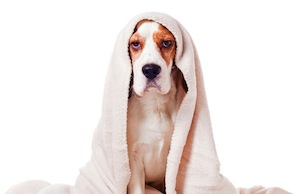 All kinds of pets can play this game, not just dogs, but for dogs it just comes naturally!
All kinds of pets can play this game, not just dogs, but for dogs it just comes naturally!
The game is also an obedience lesson. Start the game with a SIT or a DOWN, and a STAY. Be well supplied with yummy treats, and then go to another room and pick a good hiding spot. Make it easy at first and then graduate to more difficult-to-find spots. Once you are hidden- call the dog, but just once! If he doesn’t find you in a reasonable amount of time, or starts to lose interest in looking, make another noise or call his name again, to get him back into the game. When your hiding spot has been discovered, then reward with lost of treats and praise. And then start all over! Trust me, your dog will never grow tired of this game!
Are You Feeding Your Dog Something Potentially Deadly?
Watching Dr. Oz recently, reminded me of this additive/chemical in our pet’s food (and in our food!) that has been linked to certain types of tumors in laboratory animals, according to the National Institute of Health.
The evil culprit is BHA (and also BTA).
Despite findings that this chemical may be linked to cancer, the FDA still permits its use as a fat preserver in food, and generally recognizes it as safe in low doses; however, who knows what “low doses” means and why even take the chance??? Moreover, we tend to feed our dogs the same food (and treats) day after day (unlike our own diets), so the accumulative exposure is worrisome.
There are a ton of other dog food and treats (and cat food/treats) that don’t use these additives in their products. Natural preservatives are considered safer, so most dog food companies avoid the use of these chemicals.
So 2 lessons learned here!
(1) READ your pet food labels, and ingredients list!
(2) When you read on a pet food label a particular fat ingredient has been “preserved with BHA” you know to stay away!
SAME GOES FOR CATS!!
Best Games for Cats!
Your cat is playful, curious and a hunter, and he wants to interact with you to show off his natural skills. Playing games with your cat is a great way to entertain him, as well as give him some extra exercise.
Cats love to chase and hunt, so it’s natural from him to want to exhibit these behaviors for you. Many cats, if given the chance to go outdoors, will actively hunt for birds and other small animals.
These hunting and chasing skills can be replicated in games that you play with your cat. Many cat toys that you’ll find in the store focus on the game of the hunt, and allow you to play along with your cat- like a feather, or a little mouse hanging from a string, or a ball that circles around a container – and most of the time just a box and a little catnip mouse keeps my cats happy and occupied.
Another great option for a game to play with your cat involves a laser. Your cat will be transfixed by the red laser light and try to catch it. This game can keep your cat occupied for a while and also provides exercise.
Also, playing on your bed, with your hand under the covers (to protect yourself) moving it back and forth, will entice your cat as well, and bring out the inner hunter or huntress!
If your cat loves treats, you can purchase toys that you can hide treats in, too.
It is very important to keep your cat engaged in games that are both enjoyable and a good source of exercise. Your cat will make it known if he is bored, and walk away from you or the toy. Your cat may be bored with one activity but another one might continue to entertain him. Mixing up the games and toys will help keep your cat happy.
Tip for Tuesday: 3/25/14- Keep your Pet Healthy!
Take 2 minutes out of your day to better your pup’s life! Go to http://www.dogfoodadvisor.com/ , enter the brand of dog food you are using into the search field, and check to make sure you are feeding your dog a top quality food!
For cats, check out this site!http://www.petsadviser.com/cat-food-advisor/
Top 10 New Year’s Resolutions for Your Pet (And YOU!)
(1) Measure your pet’s food every time, don’t just guess.
(2) Choose an age appropriate diet taking into account their activity level.
(3) Try a new activity with your pet, whether its taking a class with your dog (Val and I do agility at Kellar’s Canine Academy, and he LOVES it!), or buying a new cat toy that your cats love (Leo & Mya loves the cat nip cigars from Yeowww Catnip).
(4) Groom your pet daily! It doesn’t have to be a long session, anything counts!
(5) Add more playtime into your pet routine.
6) Schedule a check up with your vet.
Make it Your Mission, To Get Your Pet In Top Shape This Year!
A recent survey indicates over 50 percent of America’s pet population is overweight or obese. It’s an epidemic now!
To get your pet healthy, or keep your pet healthy and at an optimal weight, food/nutrition & exercise are KEY!
FIRST STEP: DIET & THE RIGHT FOOD!
Very simply put, if your pet is overweight it is taking in (eating) more calories than it needs. Set all excuses aside … excessive weight in an otherwise healthy pet is a direct result of consuming unnecessary amounts of food. Of course, before starting down this course, consult your vet to make sure your pet doesn’t have any metabolic disorders.
When it comes to diet, feed your pet a high quality food, so he gets the nutrients he needs to keep healthy and full! It’s that easy. Don’t feed your pet the equivalent of McDonalds every day (Purina, Beneful, Alpo, Kibbles & Bits, etc) because its cheaper, and easier to purchase (at the grocery store). Spend a little more money and time, and later on down the road, your pet should have fewer medical issues, which means your wallet will suffer less too!
Let’s examine some excuses when it comes to your dog’s feeding habits. Whether your dog is a good weight or overweight, these 4 points are good to note!
DO ANY OF THESE SOUND LIKE YOU?? (cats are more of an issue, and overweight issues with cats need to be discussed with a vet)
(1) “But she hardly eats a thing.” This is probably a case where you feed your dog table food, so she is getting calories from that, and choosing not to eat her own food. Stop the people food- it’s unwanted calories!
(2) “My pup won’t keep quiet unless she gets her treats. And she won’t go to sleep at night until she gets her little dish of ice cream.” Congrats, your pet has trained you! Your pet has discovered that the more noise and fussing it produces the more likely it is to be rewarded for this behavior. The owner finally “gives in” to keep the pet quiet and the pet sees the food as a reward. In effect the owner is creating a “beggar” by rewarding his/her behavior. You need to break this habit immediately, and re-train, reward for being good and quiet.
(3) “She’s such a good dog we don’t want her to go hungry.” This dog became overweight because the owner’s signal of affection for their pet has focused on feeding. It is an understandable trait but unfortunately for the dog it can be a case of too much of a good thing. The owners’ method of showing affection should be directed more toward physical activity than feeding. Think “FETCH” and “TUG” not “FOOD”!
(4) “She just refuses to eat dog food.” In this case the dog has trained the owners to feed him/her such things as chicken, liver, ice cream, cookies, etc. This dog has been given a choice of what to eat and has chosen certain people food. The dog usually overeats because s/he isn’t getting a proper balance of nutrition, plus everything tastes so good there is a reward factor in eating. The solution is … you choose, not your pet. Leave down the dog food, and don’t worry if she doesn’t eat it right away, she won’t starve herself. A dog can go without food for 5 days before you have to worry (as long as she is in relatively good health and not diabetic).
SECOND STEP: THE RIGHT AMOUNT OF EXERCISE
Exercise is beneficial for your pets in so many ways- it helps decrease stress, improve sleeping habits, maintain or loose weight, and you know the old saying- A TIRED DOG IS A GOOD DOG!
The type and amount of exercise needed can differ greatly with breed, age and energy level of your pet. However, it is important to choose the right type of exercise for your pet with the help of a veterinarian if your pet is overweight. With their assistance you should be able to bring your pet back to their optimal weight. Arthritis, diabetes, cardiovascular problems are just some of the issues your pet will deal with if he or she is overweight. According to the Association for Pet Obesity Prevention, it may even decrease their life expectancy by up to 2.5 years. So if it is so bad as to affect our pet’s health, how are we letting it happen?
Exercise is important for all pets, overweight or not!
Whiskers and Leo does offer dog walking and dog running if you need extra help exercising your dog! As for cats, cats need daily exercise too, but more in the form of play. We do offer cat visits if your feline needs some extra attention and play!
How to Help Stop the Winter Itch!!
 Winter weather is tough on your skin and hair, so don’t forget its the same for your pup, so he or she needs the same kind of protection.
Winter weather is tough on your skin and hair, so don’t forget its the same for your pup, so he or she needs the same kind of protection.
If your dog is already itching, you need to break him or her from that habit because it can cause open sores and possible infections. A great daily supplement for this, and for all dogs, is Omega 3- it will help revitalize your dog’s skin and coat and keep it healthy. Of course always talk to your vet first.
I get compliments on my dog’s coat a lot, and I always say it’s the Omega 3 supplements and of course healthy dog food too!
Get Rid of Pet Hair in Your Home!
No matter how much you clean or vacuum, there is always more hair!! Especially in the holiday season, you want to keep the hair to a minimum because you don’t want it ending up in your Thanksgiving dinner!
With 3 pets, pet hair is always a challenge, but keep these tips in mind, and you will be stressing less about hair being on all your clothes and in your casserole!
1- Brush your pet on a daily basis. This will reduce the amount of hair you find around your home! I like the furminator.
2- Make sure you pets get plenty of exercise, because healthy bodies promote healthy coats!
3- Feed your pet a good quality pet food- it will keep their coat healthy and soft and reduce shedding.
4- Don’t let your pet eat fat. Overweight pets have difficulty cleaning and grooming themselves.
5- Keep your pets out of your closets!
Tip for Tuesday (or maybe Wednesday :) ) BAD BREATH!
Dental issues are a big item in pets, especially seniors. When you go to check on your pet, sniff the ears and check out the mouth. Look for any sign of bleeding gums, tartar buildup or bad breath. If you can’t see a pet’s back teeth because they just look like a big brown row, that’s an indication of massive tartar buildup. It is no longer acceptable to just chalk it up to “Old Age.” Also remember that any time a pet has bad breath or bleeding gums from a tartar buildup, that pet is swallowing all of the bacteria and germs into their organs, and any type of gingivitis or oral infection can take a toll on a pet’s internal organs.
There have been many advances in anesthesia so that pets can have their teeth cleaned no matter what age. Did you know that one of the most common diseases in dogs and cats is periodontal disease?!
So smell your pet’s breath today, and schedule a check up to see if he or she needs a cleaning!
Tip for Tuesday 7/30: Seat Belt Safety for Your Pets
Summer is the time for road trips! ANd what’s more fun than bringing your dog along! But are dogs safe in a car without a restraint? Studies say NO!
If we wouldn’t drive without seat-belts/restraints, why would we let our furry loved ones ride in a car without one?
According to the National Highway Transportation Safety Admin., looking away from the road for only 2 seconds doubles your risk of being in a car crash. Another study of dog owners found:
65% were distracted at least once while driving with a dog;
31% became distracted when their dog climbed into their lap;
23% used their arms to retrain their dogs while applying the brakes;
20% let their dog sit on their lap while driving;
19% took one hand off the wheel to prevent pets from climbing into the front seat.
If this isn’t enough reason to restrain your pet, think about this:
(1) Airbags are made for people, not pets! Never allow your dog to ride in the front seat. Also a dog sitting on the driver’s lap could get stuck between the driver and the airbag. And front airbags can be deadly to a dog- even a dog that is restrained.
(2) Unrestrained pets become forceful projectiles in a crash. If you crash at 30MPH your 10 pound dog becomes a flying projectile exerting 300 pounds of force. At 50 MPH, 833 pounds of force! And thats a small dog!
New Jersey (along with CT, FL, CA, AZ and Maine) already have pet safety restraint laws in place, and more states are following. Fines of $250-1000.
Keep your pet safe from all the bad drivers out there- not you of course, you are a great driver 🙂
Help! My Cat is like Jekyll and Hyde!
Help! Why is my cat biting and scratching me for no reason!
As a cat owner myself, I know how frustrating it is when all you want to do is love and cuddle your cat(s), but sometimes they just want to bite you back! Don’t take it too personal; it’s probably not you! Read these reasons for why your cat might be aggressive, and some tips for dealing with it (from the Humane Society).
PLAY AGGRESSION
Cats love to play, and stalk prey. They pounce and attack! As kittens it might be cute, because their teeth and claws are still tiny, but when they are adults, it becomes a nuisance, and can be a hazard if you have young children around. My advice is to NEVER play with your cats with just your hands, meaning don’t use your hands as pretend “prey;” always use a toy so you aren’t teaching them that attacking your hands is OK. A great toy is a long fishing pole type with a toy at the end, so you can keep your distance. If your cat happens to bite or scratch you, say “UH-UH” and immediately stop playing. Never yell or hit your cat.
PETTING AGGRESSION
Sometimes when you are innocently and lovingly petting your cat, he might take a nip at you out of the blue. Experts aren’t really sure of the reasons why, but most think it’s because some cats are sensitive on certain areas of their bodies, or just have a limited tolerance for being touched. My cats only want to be pet on their own terms! I would stay away from touching their tails, ears and paws. When they start twitching, moving their tail, turning back their ears, grumbling, or even putting their teeth lightly on your skin, etc, walk away. Going forward, I would stop petting them before you notice any of these signs. Another thing you can do is reward your cat with treats. Pet him for a little while, then treat him. He will soon associate petting with food- yum!
REDIRECTED AGGRESSION
This occurs when a cat is aroused (in a bad way) by an animal or person, but has no outlet for his naturally aggressive feelings. Maybe your cat is gazing out of the window and sees another cat or animal outside, and he then gets territorial. Since he cannot get to that cat, he attacks the first thing that crosses his path. What you should do is observe your cat- is he staring intently out the window that he doesn’t notice you, is he not responding when you call, or is he growling or hissing- then don’t mess with him! Clap your hands loudly to break his fixation, or just walk away. If you ever have to break up two cats fighting, just use a squirt bottle filled with water.
TERRITORIAL AGGRESSION
Cats are naturally very territorial. Most of the time they are only territorial with other cats, but sometimes you will meet an extremely dominate cat who thinks he owns the house (like my cat LEO!)! Some very aggressive cats can prevent you from entering or leaving a room even. We had a cat client once, who has since moved, that was extremely dominant. Every sitter I introduced him too, was terrified of him, and most would refuse to watch this cat. I had to fill in on multiple occasions because I am not afraid of cats myself, but I definitely understood their fears! If you live with an alpha cat, you can use the squirt bottle to assert your dominance to let him know who is the boss. I would also redirect a territorial cat’s aggression to a plat toy, preferably one with a long pole, so you don’t have to get too close.
OTHER REASONS
If your cat’s behavior has suddenly changed, there could be a potential medical issue. Take him to the vet for a check up. If he is fine, then he might just need behavior modification. Maybe he is just stressed out at home (too much noise, too many people or other pets around). Consider confining him to one room, that is quiet and less stressful and see if this works. You can also always contact an animal behaviorist.
GOOD LUCK!
16 Top Household Hazards for Cats
I know as a cat owner you think you have thought of it all, but it’s better to be safe than sorry!
(1) Human medications. Never leave pills on the counter because I have seen/heard of cats eating them, despite the fact that they are NOT tasty!
(2) Insecticides. One of the most common incidents, involved the misuse of flea and tick medication such as applying the wrong ones to the wrong animals.
(3) People Food. Keep your cats away from grapes, raisins, chocolate, xylitol, avocado, gum…
(4) Plants. Click here to get a complete list.
(5) Pet Medications. Make sure they are properly dispensed.
(6) Rodenticides. Don’t use them in your homes – cats can get into most tight places.
(7) Household Cleaners.
(8) Heavy Metal Paint Chips.
(9) Garden Products. Watch out for cocoa mulch and fertilizer.
(10) Chemical Hazards. Watch out for anti-freeze, pool chemicals, paint thinners & drain cleaners.
(11) Thread, Dental Floss, Tinsel. Cats love string so watch out!
(12) Mini Blinds. Cats/kittens can easily hand themselves if they get caught in the cords!
(13) Treated Toilet Water. I have stopped using the toilet bowl tabs that clean your toilet automatically because even cats sometimes drink out of toilet bowls; they are very agile!
(14) Rubber Bands.
(15) Plastic Bags.
(16) Windows/Screens. An open window can pose a threat to a cat, even if it has a screen on it. I would’t open your windows too far. Screens can break!
House Training Tips!
Some clients have recently asked us about house training, so we thought we would share some tips!
(1) Keep your pup on a regular feeding/watering and walking schedule.
(2) Your pup’s walking schedule depends on his age and how far along he is in house training. Young puppies always need to go out first thing in the morning, last thing at night, and shortly after naps, playtime and eating. Other than that, a typical walking schedule is every hour for how old your pup is in months. So if you have a 3 month old pup, he should be able to hold it 2/3 hours (of course this varies).
(3) Your puppy always needs to be monitored in your home, so as to not let him have accidents. Watch for signs such as whining, barking, and sniffing. Be aware of your pup’s signals that he has to go!
(4) When you are not around, or not able to watch your pup, he should be in a crate. Crate training is an excellent technique for helping with house training, and keeping your pup safe while he is still young, and curious! The crate should not be too big. Gradually, as he gets older and grows you can increase the size of the crate, and eventually give him more and more space while still keeping his environment safe.
(5) When you do take him out to go to the bathroom, praise and treat him afterwards. I would give him the same treat for going outside, and only give him that treat for doing just that. Also, take him to the same spot each time to go to the bathroom.
(6) If you find your pup in the act of eliminating indoors, startle him, so he might stop mid-stream, and take him directly outside to finish. Then reward and praise. If you find that he elimiated but did not catch him in the act, you cannot scold him, because he will not relate that to the wrong act.
Good luck!!
Adopting A Kitten? 10 Reasons Why 2 Are Better Than 1!
1) The most obvious reason is that you are saving 2 lives, instead of just 1!
2) If you have an older already established cat, if you get 2 kittens, they they will most likely play together instead of harassing the older cat.
3) You may experience less behavior problems with 2 kittens. Behavior problems often stem from boredom.
4) Seeing 2 kittens curled up together for a nap is the cutest thing ever!
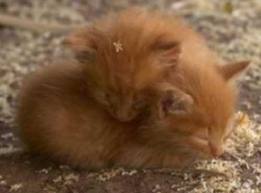
5) 2 kittens will more likely not get in as much mischief during the day because they are not lonely and have each other to play with.
6) Kittens learn by copying, so if one picks up a habit fast, like using the litter box, the other one will copy. Also they help groom each other, which is another cute sight!
7) If 1 kitten is finicky about food, usually seeing the other eat will help him get over his pickiness.
8) It is so much fun to watch 2 kittens play with each other!
9) They help each other burn off energy!
10) 2 kittens who grow up together will most likely be lifelong friends, and why would you not want that for your furry friend? They will each have a friend for life!
I have 2 kitties, Leo and Mya, and I got them when they were 12 weeks old, only a couple weeks apart. Never again, would I get just 1 kitten. They love each other!
Here they are as kittens wrestling!
Tips for Bathing!!
Has your dog gone without a bath for too long, because the process is daunting to you??

When should you bathe your dog? Whenever he starts to SMELL like a dog! Or about once a month for the average dog I would say. You don’t want to bathe too much because then his skin will dry out.
Here are some tips!
1) Start bathing your dog regularly at a young age to get him use to the process. Puppies should be at least 4 weeks old before their first bath. I have been bathing Valentino since I got him a 10 weeks, once a month, and he is very use to it now- still hates it- but he will stand in the shower and let me wash him. I even taught him not to shake until I’m out of the shower!
2) If bathing inside, make sure your house is warm, also do your prep work before hand- like getting shampoo and towels ready to go. Also is you are bathing in the tub (or a slippery shower), make sure there you have a non-stick matt, or else your dog will slide all over and get scared, and possibly hurt himself
3) Start by combing out any matts if your dog has long hair. Otherwise the water turns the matts into hard masses. If your dog’s hair is matted with a sticky material, trim with clippers or soak the area with mineral oil for 24 hours. (Or consult a professional groomer for difficult matting).
4) Prep your dog. You can put cotton in their ears to prevent water from dripping in. I do not do this, because im afraid of the cotton slipping down the ear canal, but if the cotton is large enough it wont slip.
5) Bathe your dog as quickly as possible to make the process less annoying for both of you. Be thorough and do a good cleaning. Make sure you get out ALL the soap or else his coat with itch, and you’ll have to do the whole process again. Dry your dog immediately. Use a good pet chamois, lots of big soft towels, or a hair dryer set to a low setting, not too hot. Or use all 3 like I do!
Good luck!

Stop Your Dog From Jumping!
 Stopping your dog from jumping can be a daunting task. My puppy is 2 and he still jumps on people, but mostly at the dog park, when he’s really hyper and running around with his ball in his mouth. Luckily he is only 44 pounds (however some people might say that is big). In contrast, there is a 125 pound Great Dane at the dog park that jumps, and the outcome is a little bit different needless to say!
Stopping your dog from jumping can be a daunting task. My puppy is 2 and he still jumps on people, but mostly at the dog park, when he’s really hyper and running around with his ball in his mouth. Luckily he is only 44 pounds (however some people might say that is big). In contrast, there is a 125 pound Great Dane at the dog park that jumps, and the outcome is a little bit different needless to say!
When your dog is a puppy, it is cute when he jumps, but when he turns into an adult, it is more a nuisance and could be dangerous (and can wreak havoc on your wardrobe!)
Teaching your dog not to jump takes time, patience, and some training and management.
TRAINING
First you have to teach your dog that if he jumps he gets NO attention. Turning your back to him is a great way of doing this. Never use your hands to push him off you because this is considered attention.
Then teach your dog if he sits, you will then pet him and give him attention.
One of the most important things in training is CONSISTENCY, so make sure your whole family is on the same page!
MANAGEMENT
When teaching your dog not to jump, you must manage every situation so he doesn’t have an opportunity to jump. Things you can use to help you manage:
(1) Keep your dog on a leash around people you know he will jump on, so you can control him. For example, a lot of dogs jump on new visitors to your home, so put a leash on your dog before answering the door.
(2) Confine your dog to another room when you are at your home, and have visitors over.
(3) You can also put your dog in his crate (but not as punishment) when you are at your home and have visitors over.
All of these things will prevent your dog from jumping, and possibly reinforcing bad behavior while he is in the learning phase.
Here are some other useful tips:
(1) If your dog jumps on you when you come home, then keep your greeting low key. If he does jump, turn your back and ignore him. Tell him to sit, and when he does then praise him and say hello to him.
(2) If your dog jumps on you when you are sitting then stand up and ignore him. Don’t push him or use your hands, just ignore him.
(3) If your dog jumps up on other people and if you have your dog on a leash, you can control him and tell him to sit. Then when he listens, you can tell the other person to acknowledged him, and you can even give that person a treat to give him. If you don’t have your dog on a leash and someone is approaching you, you can put your dog in a sit and stay, and then praise and reward him if he stays there when they person has approached. Of course if he does jump, you can ask the person to turn his back on the dog, and not pet him. If you are at an off-leash park or somewhere where your dog is not on leash, and a person says ITS OK when your dog jumps on them, you can always in a friendly way tell them you are training your dog not to jump, so they know its not OK with you.
Good luck and remember stay consistent! It can be a lot of work, but you are stimulating your dog every time you work with him, so this is actually great mental exercise for your dog!
5 Easy Things You Can Do Right Now To Keep Your Dog Safe
(1) Do NOT give your dog bones, like chicken or turkey bones. They can break easily and their sharp edges can make your dog sick. Just because your dog begs for something with that cute face, doesn’t mean you should give in!
(2) Do NOT feed your dog table scraps, they could be poisonous. Also, it is just a really good rule to have, because then your dog will have manners when you have company over, and won’t be a beggar!
(3) Only feed your dog, dog-specific treats.
(4) Check recalls on dog foods, treats and products.
(5) Pick treats that fit your dog’s size. Treats that are too big or too small can get caught in your dog’s mouth or esophagus.
Protect your Pup’s Feet!
I found this product that I love to use to protect Valentino’s paws from the ice, salt and hot pavement!
It’s called Mushers Secret!
For me it works better than booties, because my dog hates booties and slips with them on. I ordered it off Amazon, but Im sure some pet stores carry it.
Heres the description:
- Protects from hot summer concrete as well as bitter cold conditions.
- Apply a thin coat on pads and between toes. Protects from salt and chemicals and prevents icy snowballs from forming between toes.
- Prevents potential paw problems such as bruises and blisters, cracking and abrasions.
- Allows perspiration to escape through toes.
- Use weekly or as needed. Dries in seconds, does not stain, non-toxic and non-allergenic.
Are you Pad Training the Right Way?
One of the wonderful things about puppies is that they are so cute and innocent, and we get to share in their joy of discovery of this new world!
They rely on their human pack to teach them life lessons, and one very important part of that learning is housetraining.
Young dogs have weak or undeveloped bladders. In time they develop the muscle strength necessary to hold their urine for longer periods of time, but at first they must eliminate within just an hour or two after eating or drinking. It can be difficult to maintain this schedule if you work out of the home, leave it for any extended period of time, or even while you sleep! That’s why pad training is recommended for some dogs. By training your dog to eliminate on a carpet-safe absorbent pad rather than the furniture or floors, you save the both of you quite a lot of stress.
Getting a dog to use a pee pad is easy!
Step 1 – Place the pad in the same spot repeatedly. Putting the pad in the same place will help the puppy become accustomed to this new form of going to the bathroom. Remember: repetition is good.
Step 2 – Bring the puppy over to the pee pad whenever you think they might have to urinate: first thing in the morning, right before bed, after extended play time, a deep drink of water, or a long nap. This is especially important for puppies, who have little bladder and bowel strength during the first year.
Step 3 – Reward your puppy when they eliminate on the pad. Keep a box of treats handy so that when your dog has successfully done his business on the pad, you can quickly slip one to him. Positive reinforcement is the key to housetraining. Use a special type of treat for rewarding, and only use this treat for this purpose.
Step 4 – Don’t respond negatively when dealing with the pads. Many owners will react with yells and pointing when they see that their pet has had an accident near the pad or that they have chewed on the pad. Don’t make this mistake! Puppies will associate any negativity with the pads themselves, which will undo your hard work.
Step 5 – When you leave, place the pee pad in the room/area where your puppy will be. This will help reinforce that this is where your dog should go to the bathroom while you’re gone. Soon your puppy will learn to go independently of you and your schedule.
With these 5 steps, the transition to pee pad should be much easier for you and your pup. Don’t forget: pads are no replacement for healthy walks with your pup.
However, when your dog gets old enough, and to save some money because pee pads can be costly, you should transition your dog to only eliminate outdoors. See our next blog post for hints on how to housetrain your pup!
Holiday Time & Pets
Holidays can be dangerous to your pets. In regards to Christmas trees, pine tree water can be poisonous to your pets. Use an enclosed tree stand or cover open tree stand bases. Secure your tree to the wall with strong wire or twine. Also, decorating with glass ornaments, tinsel, ornament hooks or electrical wiring all pose significant danger to your pets by ingestion or contact. Be sure to unplug lights and decorations your pet has access to when you are not home! Do not put presents that have food items in them under the tree. Holiday plants that are poisonous to pets include the berries of the mistletoe, holly, hibiscus, Christmas roses and poinsettias, so do not buy those, and if someone brings you a plant as a gift, maybe you can keep it outside or on a shelf where your pets can’t get to it!
For New Years celebrations, make sure your pet is safe too. If you are going to host a party, secure your pet in a quiet area away from boisterous activities. Noisemakers and fireworks can greatly distress pets and cause them to panic and try to run away (so don’t leave them outside unattended). Inform guests to not give any food or scraps to your pet, and also warn them about where they should leave their plates and drinks. Table food, especially large amounts, or if your pet isn’t use to people food, can cause havoc on your pet’s digestive tract. Also, party decorations and novelties can also become dangerous to your pet if eaten.
HAVE A SAFE & HAPPY, HEALTHY HOLIDAY!
Are You Keeping Your Pet Healthy!!??
Many people don’t realize how important it is for your pet to get plenty of clean, fresh water. Studies have shown that getting your pet to drink more water is one of the easiest ways to maintain good health. However, many animals, do not drink enough water.
Do you ever notice your cat likes to drink from the faucet, or your dog likes to drink out of the toilet bowl? There is a reason behind this strange behavior!
In nature, moving water is cleaner. It has less bacteria than stagnant water. In addition, moving water is more aerated, so it tastes better, and makes the water more appealing to drink. Running water also is naturally filtered. So for these reasons, pets may seek running water or water that is constantly refreshed (like the toilet bowl) over water sitting in a bowl.
My cats LOVE drinking out of my bathtub. So I leave the water on a trickle for them multiple times a day. I have also heard that cats like when their water source is separate from their food source, so you can try moving their water bowl, or leaving another bowl of water out for them in a different place. Other people love water fountains for their cats and/or dogs. I am personally not a fan. I have tried many, and I always end up returning them. But to each their own!
For my dog, I just use a water bowl, and refresh it multiple times a day. Also make sure you actually wash and scrub out your pet’s water bowls with soap once a day. People frequently tend to forget to do this. Even water bowls can get bacteria growth.
Whatever you choose, just make sure your pet has access to clean, fresh water, and he or she will be healthier!
TIP FOR TUESDAY 11/20/12: Does Your Dog Snack on Your Cat’s Food??
For all of you cat AND dog owners, listen up! Be very conscious where you feed your cat. The dietary needs of your cat and dog are very different, and your dog should be kept away from snacking on your cat’s food or treats. The strong aroma of a cat’s food can be quite tempting, maybe even tempting enough to jump on the forbidden counter, so be weary! Commercially prepared cat food and treats are high in fat and protein, when compared to dog food and treats. Besides weight gain, and unneeded calories, the richness of cat food can have other more serious effects on a dog if fed regularly. Generally speaking, you do not want your dog to eat food that is formulated for cats, so just keep Fido away from the cat bowl (and litter box!!)
Looking for a Kitten or Cat to Join your Family?! (Part 2)
Continuing our blog post from yesterday (Part 1), we spoke about the challenge facing cats and kittens (and dogs and puppies) in shelters and rescues. The challenge is that when people think about having a new pet join their home, they fist usually consider what “type” of cat or dog they are seeking. Often this notion of “type” leads people away from adoption. But what most people don’t realize is that many cats, kittens, puppies and dogs in shelters and rescues are purebred or near mixes of the same breed they may be seeking.
Meet Amelia!
Amelia is a Calico. Calicos are technically only a color and not a breed of cat, but they are often alike in their fun-loving and sweet demeanor. Calicos often get along with everyone, and anyone, including dogs, other cats and even horses. They are often found to be lap cats that will greet their human companions when they get home from a long day’s work with a soft coo.
If you are looking for a Calico to call your own, meet, sweet and unique Amelia Bedelia!
Amelia was abandoned under a park bench, fully declawed with no defense against any dangers that may have come her way. Fortunately, she was caught in the park eating garbage that had been left behind, and from then on she has had a great foster home. She is sweet, good with everyone and every creature, and loves to be loved. However, her cute and pathetic little squeak of a meow is the only warning you’ll get until Amelia decides it’s time to climb your leg for attention!
Find a Calico Cat / Kitten Near You Now at Adopt-a-Pet.com
http://www.adoptapet.com/s/calico-cats-for-adoption
Also meet Ally Cat, who is a Calico mix. She is gorgeous! Her owner passed away, and she was brought to the shelter, and then saved from death row by Louie’s Legacy. Check her out at http://www.petfinder.com/petdetail/18571471.
Watch out for our last segment of Looking for a Kitten or Cat, coming soon!
Myths De-Bunked!
(1) Dogs like the taste of blood once they bite. This is not true! Some dogs are aggressive for a variety of reasons but not because they like the taste of blood!
(2) The best way to remove a tick is with a match. This is not true! The best way is simple- use a tweezer.
(3) Skittish dogs are “abused.” This is not entirely true. Dogs can be skittish for many reasons, not just because they might have been abused. Just like people, some dogs are shy! Also, if a dog is not exposed to humans during the first 12 to 14 weeks of his life, then he might never become fully acceptable of humans.
(4) Mixed breeds are healthier than purebred dogs. This is not entirely true either- depends on the dog. Mixed breeds tend to have less genetic disorders because of their hybrid nature. If you do opt for a purebred, make sure you pick a responsible breeder. Responsible breeders are typically aware of any genetic problems, and work diligently to reduce them.
(5) Bones are good for dogs. This is not true! Bones can be very dangerous and are not recommended to give to dogs.
|
10 MUST ASK QUESTIONS BEFORE HIRING A PET SITTER/ DOG WALKER
- Do they have liability insurance and bonding, and how much insurance? Accidents can happen, so you want to make sure they are professional and has proper coverage.
- Are their pet sitters actual employees or independent contractors (meaning do they get paid by a 1099 or W-2)? This is important for control and liability reasons, and if a company hires actual employees you know they are a company that is going to be around for a while! In addition, you know they are a legitimate company and they value their sitters if they are paying payroll taxes, disability, workman’s compensation, etc.!
- Do they background check their sitters? If an independent pet sitter, and not a company, have they run a background check on themselves? Some pet sitters/dog walkers may seem great when you meet them and say all the right things, but you are entrusting them with your pets and sometimes access to your home!
- Are they a member of any professional pet sitting organizations?
- How do their dog walkers/sitters keep track of their schedules?
- Will they give you the same walker/sitter each day, or each time you call? If not, how does the interview process work with each sitter that will come into your home?
- What methods of payment do they accept?
- For dog walking, how many dogs do they walk at once? In addition, are there certain types of collars/harnesses/leashes that they use or do not like to use? Many pet sitters/dog walkers will not use certain types of collars and leashes for safety reasons and they limit the number of dogs they will walk at one time. This assures the safety and well being of the animals they are responsible for!
- What are the company’s mission, values and ethics? Check the company’s website and marketing literature. What is their reputation in the community? You can ask around at vets, groomers, pet stores etc. to see if they know anything about that company. Do they work and/or donate their time with local rescues? In addition, search engines such as Yahoo, Google, and local search engines (kannekt.org, silive.com) are great places to check the reviews about the company. Be wary of a company that doesn’t have an online presence!
- Lastly, Ask them for at least 2 references of current clients that use their services! This is very important to see if they have happy clients!
Beware of Retractable Leashes!
You see it all the time- on the crowded streets, at events, at farmer’s markets, in your own hallway of your building – the infamous retractable leash! As if dog owners don’t have enough things to worry about with the safety of their dogs…..
Retractable leashes are those long-cord gadgets with plastic handles that allow the dog to roam 20 to 30 feet from the owner. I’ve seen and heard about way too many tragedies and near- misses befall dogs (and handlers) of these leashes. From failure of the equipment, to human failures during use, these leashes are just too risky in my opinion to use on a beloved part of your family!
Unfortunately, most people wait until something awful happens to rid themselves of these leashes. Don’t be that person! Be proactive. Don’t let yourself get into the situation where your dog is 15 feet ahead of you, and has a head start of 3 seconds. This is when accidents can and will occur.
Not to mention the fact that you are giving your dog full control of the walk, and essentially letting your dog walk you. You are no longer the pack leader in Cesar Milan’s terms. Might as well just throw all your training out the window! In addition, you cannot wrap the leash around your wrist for extra security during a walk, because it’s an actual cord that will cut you.
I’v heard countless horror stories from the leash breaking, to the leash snapping back into someone’s eye. The saddest story I heard, was from a sitter of ours – about 10 to 15 years ago, she was out walking her dog on a retractable leash, when the dog spotted a squirrel and decided to take off after it…the cord on the retractable broke, and the dog darted in the street and got hit by a car, and was paralyzed the rest of his life.
Humans also get hurt from retractable leashes. In 2007, there were 16,564 hospital-treated injuries associated with leashes, according to Consumer Union’s analysis of statistics collected by the Consumer Product Safety Commission. Of those, about 10.5 percent involved children 10 and younger; 23.5 percent involved injuries to the finger. The CPSC’s data does not parse the leashes into types but it’s likely that the amputations were caused by retractable leashes.
The person holding the leash does not realize that they really do not have control over their dog; even if the leash is “locked”—the cord is in no way going to control the dog. There are many reports of dogs dashing into the street or running after another animal, and the owner can not react fast enough to reel in their dog or worse—the cord breaks. There have been many reports of deaths and injuries, to the dog and/or owners, which have resulted from just this issue.
Of course, there is a time and place for everything. If you are walking your dog in an open area, like a beach or huge park area, or working on recall skills, then maybe a retractable leash is acceptable. It will allow your dog a little more freedom than a regular 6’ leash. However, they are not safe in an environment with kids, other dogs, other people or distractions where the leash can cause tripping, cutting or other serious injuries. If you are at a crowded event, please be responsible and use a regular 6’ leash made of nylon, leather, cloth or any other material where you can have complete control of your dog and leave the retractable at home.



